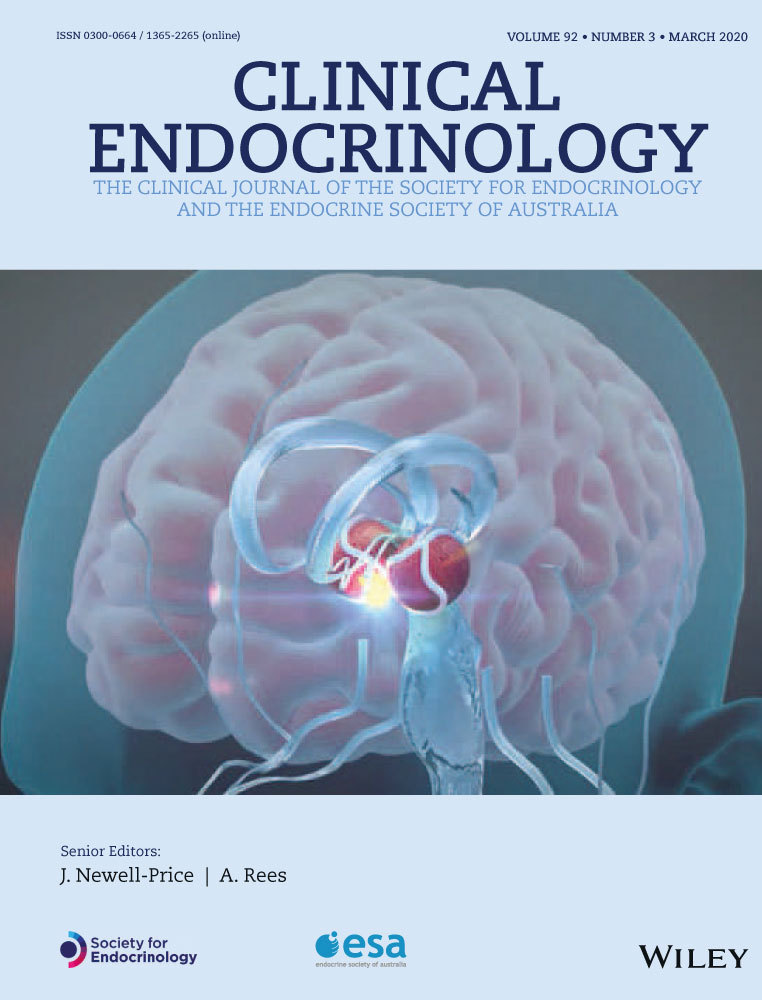Joint statement from the Society for Endocrinology and the British Thyroid Association regarding ‘Association of Radioactive Iodine Treatment with cancer mortality in patients with hyperthyroidism’
- There was no control cohort with hyperthyroidism in this study. This is a substantial limitation of the study. It is not clear why patients with hyperthyroidism who did not receive radioiodine were not used as controls since these data are available in the CTTFUS cohort. The lack of a hyperthyroidism control group makes it difficult to ascertain whether the increase in cancer risk is a consequence of hyperthyroidism and poor disease control or of radioiodine per se. This is important, as several previous analyses of large data sets which used a control group did not find increased risk of secondary cancers from radioiodine.2 Furthermore, a further analysis of the CTTFUS data set by two of the study co-authors has shown no excess cancer mortality attributable to radioiodine whereas an increased risk of solid cancer deaths was observed in hyperthyroid patients who were not treated with radioiodine or surgery.3 This discrepancy with findings of the original study is a cause for concern and calls for a more detailed evaluation of cancer risks in the entire CTTFUS cohort.
- The model used to calculate the absorbed radioiodine dose is novel but not validated. A complex mathematical model has been used to estimate the absorbed radioiodine dose, based on a series of assumptions on thyroid gland weight and radioiodine uptake in a small preliminary sample of patients. The biokinetic model was calibrated from 197 patients with hyperthyroidism who underwent serial iodine-131 measurements in the thyroid, blood and urine.4 The model was applied to each patient in the cohort using their Iodine-131 thyroid uptake, thyroid gland weight and administered radioiodine dose in multivariable regression equations to calculate the number of Iodine-131 disintegrations in source organs. Following this, reference standards were then used to estimate the mean absorbed organ dose from the Iodine-131 disintegrations.4 However, the validity of the model has been questioned due to the wide error margins incurred in the estimates and the assumptions required of the thyroid gland weight and uptake measures.3, 5 These assumptions leave significant uncertainties in organ dose exposure, and whilst impressive, the model will need to be replicated and further validated.
- In the analysis, important confounders such as smoking and obesity have not been considered. The analysis did not correct for a number of important confounders for cancer risk including smoking, obesity, alcohol intake and biochemical disease severity. Smoking is an important cause of cancer mortality, and amongst patients with Graves' disease, smokers have a higher risk of drug treatment relapse6, 7 and are more likely to receive radioiodine. Hyperthyroidism in itself is associated with an increased risk of death8 and an increased risk of breast cancer occurrence and mortality.9-11 Without correcting for these factors, it becomes problematic to attribute mortality to the effects of radioiodine. The failure to account for these confounders is likely due to the nature of the data set used, but it remains an important limitation which should warrant further caution in the interpretation of data and conclusions.
- Excess solid cancer risk is not seen following administration of substantially higher doses of radioiodine to patients with thyroid cancer. Studies in radioiodine-treated thyroid cancer patients show development of secondary cancers when the administered cumulative iodine-131 activity is in ranges of 7400-1400 MBq.12 A recent updated metanalysis showed no increased risk of second malignancies at the usual doses administered to thyroid cancer patients (mean iodine-131 activity varied from 3700 to 5500 MBq).13 A small risk of leukaemia was observed at these doses but there was no significant increase in the occurrence of breast cancer or other solid malignancies.13 A causative role for radioiodine in the study by Kitahara et al thus seems unlikely given that excess risk was only observed for solid malignancies in their study, and the mean administered radioiodine activity (375 MBq for Graves' disease and 488 MBq for toxic nodules) was only about 10% of those administered to thyroid cancer patients. This argues against a dose-response association and makes a causal role for radioiodine less plausible according to criteria for causation set by Bradford Hill.14
- Whilst statistically significant, the magnitude of observed effects in this study is modest. The risks observed were marginal, with an estimated relative risk of 1.06, 95% confidence interval, 1.02-1.10, for total solid cancer mortality. Thus, given the uncertainties in the radioiodine dose estimates, the potential for unexplored confounding by indication, and the lack of patient control groups, these marginal risks will need to be interpreted with caution.
Recent observations have shown the importance of achieving good control of hyperthyroidism in a timely fashion to improve long-term cardiovascular and mortality outcomes.15, 16 In this context, it would be unfortunate if patients were deprived of the option of rapid, effective control of their hyperthyroidism with radioiodine, due to concerns of cancer risk. Overall, on the basis that current evidence shows no excess cancer risk, it would be reasonable to continue with current approaches to the management of hyperthyroidism, whilst further, appropriately controlled studies are undertaken. We believe that long-term monitoring of outcomes, including cancer mortality risk, is essential for patients who have undergone radioiodine therapy. We endorse and would actively support efforts to construct large national databases of radioiodine-treated hyperthyroid patients to assess such outcomes.




